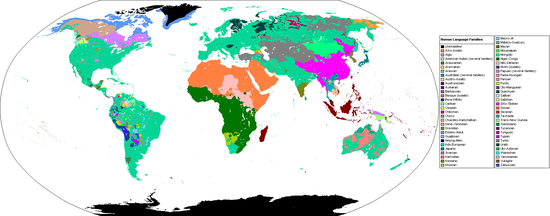The importance of learning other languages

There are different kinds of language in this world and learning more as you can will help you in many ways of your life for example in the job, or meeting people from other countries . Learning another language improves your abilities to use your first language and explore other cultures more succesfully. But trying to learn another language is not always easy, so how much difficult is to learn another language different from our mother tongue?
The answer depends on ther years and dedication you devote learning these languages, but in fact there is another factor that helps us or not learning some types of languages. These are the Family languages:

For example, if our mother tongue is the Spanish or any latin language, we will learn easier and faster another latin languages because they are very similar, and languages like Chinese , Deutsch or others will be more difficult, although they have each other some common words. The most important language nowadays is the English. English began famous since then 1st World War. The United States of American and Britain, were the countries with more colonies, like Australia and many territories of Africa. This is the reason why English has a lot of speakers around the world. English is a obligatory subject in most of schools, highschools and universities of the world. The English is the franc language nowadays and it's very useful because it is talked in every country. But not everybody speaks English, around 75% of the world's population don't speak any word of English.
Learning languages opens doors to other cultures and gives the learner an experience of the world that goes deeper than the average tourist trip. It can also provides a key to the global workplace.
Why is it important for children to learn languages?
·Learning a foreign language makes our minds stronger and more flexible.
-It improves our chances of employment.
-You feel really good when you can speak many different languages.
-Languages connect the world and have the potential to make it a more peaceful place.
-It is used in business and for pleasure of communication.
-It develops a cultural understanding and makes better relationships with others.
-Language learning helps brain power and improves your language skills.
Why is it important employers know languages?
-Research has shown that using language skills in business opens the door to a wide range of economic, social and personal benefits.
- A lot of employers are looking for employ people with conversational language skills
-Customers addressed in their mother tongue are much more likely to do business with you.
-Studying a foreign language improves your oral and written skills in English too, and this also helps to develop key communication skills, that are crucial in the job.
-English, French and German are still the most useful languages, Spanish is increasing his importance around the world
These are some of the reasons why it is important to learn languges. Why don't you try it?
 By Andreea Nicoleta Radu
By Andreea Nicoleta Radu












